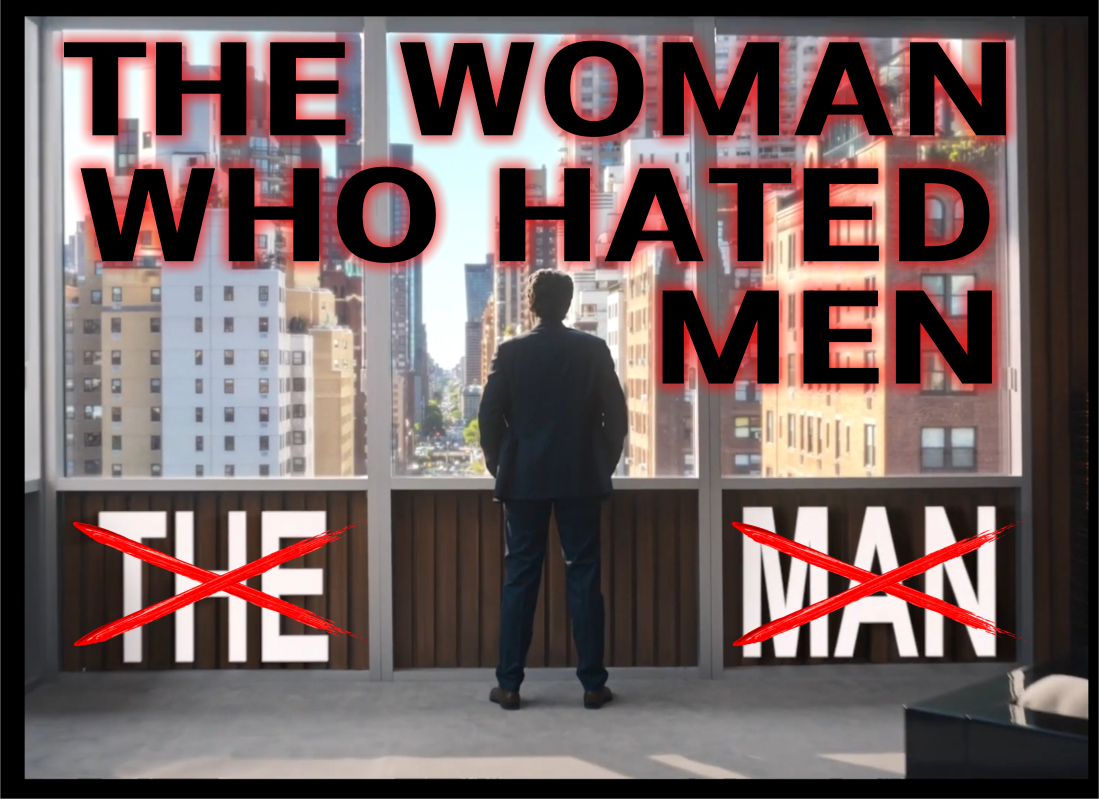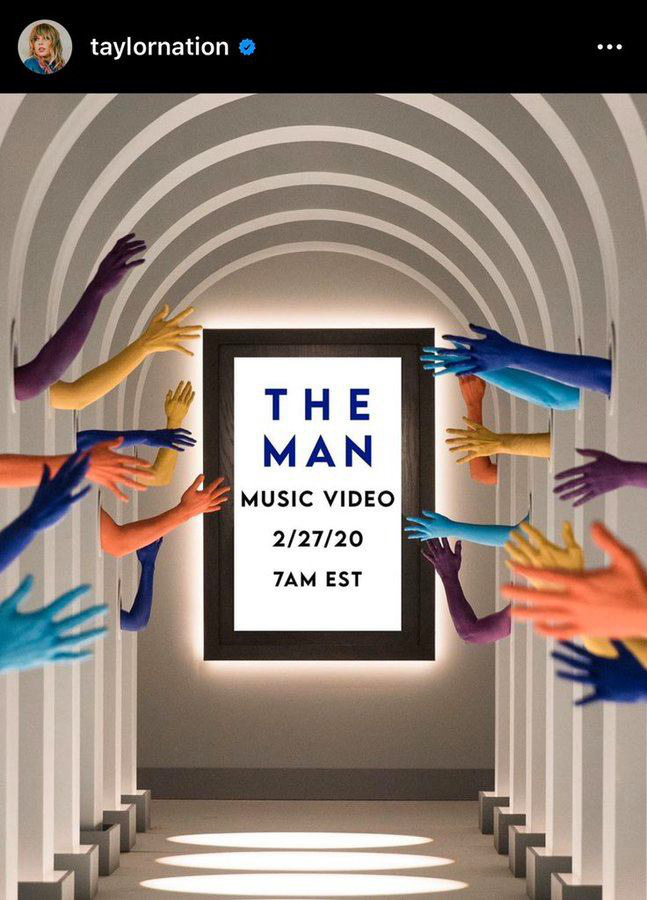Taylor Swift has long been a polarizing yet undeniably influential figure in the music industry. Known for her storytelling prowess, reinvention, and ability to connect with audiences worldwide, Swift has consistently pushed boundaries with her work. Her 2019 album Lover marked a vibrant, romantic era, with singles like “Me!”, “You Need to Calm Down,” and “Lover” dominating charts and conversations. However, after a period of relative silence following the album’s release in August 2019, many assumed the Lover era had concluded. That is, until Swift dropped a bombshell on February 27, 2020, with the release of the music video for “The Man,” the fourth single from the album. This release not only revived the Lover era but also showcased Swift’s unparalleled versatility and her bold commentary on gender dynamics.

Unlike her previous singles, which often revolved around themes of love or clapbacks at critics, “The Man” is a sharp, introspective exploration of societal double standards. The music video, entirely conceptualized and directed by Swift herself, is a visual manifesto that amplifies the song’s message. With Swift taking on every major role—director, writer, actor, and even transforming into a man—the video embodies her “I can do it all” ethos. Through clever storytelling, meticulous production, and a jaw-dropping reveal, “The Man” cements Swift’s status as a multifaceted artist who uses her platform to challenge norms and spark meaningful dialogue.
A Departure from the Familiar
At its core, “The Man” is a feminist anthem that interrogates the disparities between how men and women are perceived and treated in society. The song’s lyrics imagine a world where Swift, as a woman, could navigate life with the same ease and privilege afforded to men. Lines like “If I was a man, I’d be the man” underscore the frustrations of being held to stricter standards, judged more harshly, and scrutinized for behaviors that are often excused or celebrated in men. The music video brings this concept to life with vivid, satirical imagery that highlights these inequalities in a way that is both thought-provoking and entertaining.

Previous Lover singles leaned heavily into romantic optimism or defiant self-empowerment. “Me!” was a bubbly celebration of individuality, “You Need to Calm Down” a colorful defense against haters and a nod to LGBTQ+ allyship, and “Lover” a tender ode to enduring love. In contrast, “The Man” takes a more cerebral approach, tackling systemic issues with a level of nuance rarely seen in mainstream pop music videos. It’s a bold pivot that demonstrates Swift’s willingness to evolve and address complex social issues head-on.
The Transformation That Shocked the World
Perhaps the most striking element of the “The Man” music video is Swift’s transformation into a man. Through impeccable prosthetics, makeup, and mannerisms, Swift becomes unrecognizable as “Tyler,” a brash, entitled male character who embodies the stereotypical behaviors society often overlooks in men. From manspreading on a subway to urinating in public, yelling at subordinates, and partying excessively, Tyler’s actions are deliberately exaggerated to expose the leniency granted to men for behaviors that would be deemed unacceptable for women.

The video’s opening scenes are jarring, as viewers are introduced to this larger-than-life male figure without any hint that it’s Swift in disguise. The attention to detail is remarkable: Tyler’s broad shoulders, chiseled jawline, and confident swagger are so convincing that many viewers might not suspect the twist until the credits roll. Swift’s commitment to the role extends beyond physical transformation—she adopts male mannerisms, from scratching and slouching to flirting aggressively, with a precision that borders on caricature. The result is a performance that is both humorous and unsettling, forcing audiences to confront the stark contrast in how similar actions are judged based on gender.
Adding another layer of brilliance, Swift enlisted Dwayne “The Rock” Johnson to provide the voice for Tyler, lending an authentic masculine tone to the character. This collaboration, combined with Swift’s physical and behavioral transformation, creates a seamless illusion that underscores the video’s central question: Would Swift’s life—and the lives of countless women—be easier if they were men?
A Narrative of Contrast and Critique
The music video unfolds as a series of vignettes, each depicting Tyler engaging in behaviors that are socially permissible for men but would be scandalous for women. In one scene, he’s seen reveling in a hedonistic yacht party, surrounded by adoring women—a lifestyle often glorified in media portrayals of successful men. In another, he’s shown being praised for minimal effort in a corporate setting, a nod to the glass ceiling and the unequal expectations placed on women in professional environments. These moments are interspersed with subtle visual cues, like tabloid headlines and societal applause, that reinforce the privilege Tyler enjoys.
For viewers unfamiliar with Swift’s work, the narrative might initially seem disjointed or confusing. Unlike her previous music videos, where she often takes center stage as herself, Swift appears only briefly as a female director observing Tyler’s antics. This meta-commentary adds depth to the storytelling, positioning Swift as both creator and critic of the world she’s depicting. It’s not until the final moments, when the credits reveal that Tyler is, in fact, Swift, that the full weight of the video’s message hits home.

The reveal is a masterstroke, transforming what might have been a straightforward satire into a powerful statement about identity and perception. By embodying the very figure she critiques, Swift challenges viewers to reconsider their own biases and the societal norms they take for granted. The credits further amplify this message, listing Swift as the director, writer, actor, and owner of the project—a testament to her creative control and a subtle jab at the assumption that women need external validation or assistance to succeed.
The Feminist Undertones
At its heart, “The Man” is a feminist rallying cry, but it’s delivered with a level of sophistication that avoids preaching. Swift doesn’t simply point out inequalities; she illustrates them through contrast, humor, and irony. The video’s exaggerated portrayal of male privilege serves as a mirror to society, highlighting how behaviors that are normalized for men are weaponized against women. A woman urinating in public or acting aggressively in a boardroom would likely face harsh criticism, yet Tyler’s actions are met with indifference or admiration.

Swift’s decision to direct the video herself adds another layer of significance. In an industry where women are often sidelined in creative roles, her hands-on approach is a statement of empowerment. By taking on every major aspect of the production, from conceptualization to execution, Swift embodies the self-reliance and resilience that the song celebrates. The inclusion of an all-female crew in the credits further reinforces this message, showcasing the strength and talent of women in a male-dominated field.
A Return That Defied Expectations
The release of “The Man” came as a surprise to fans and critics alike. After months of inactivity following the Lover album drop, many assumed Swift had moved on to her next project. Her retreat from the public eye in late 2019 fueled speculation that the Lover era was over, with only three singles to its name. The announcement of “The Man” as the fourth single, accompanied by a music video that Swift directed and starred in, was a bold reassertion of her presence and relevance.
The timing of the release—February 27, 2020, at 7 p.m. Vietnam time (6 a.m. EST)—added to the anticipation, as fans across the globe tuned in to witness Swift’s latest creation. The video quickly went viral, with social media platforms buzzing about Swift’s transformation and the video’s incisive commentary. Headlines like “Taylor Swift Shocks the World by Becoming a Man” and “From Pop Star to Feminist Icon” captured the public’s fascination with her audacious approach.

Why “The Man” Matters
In the context of Swift’s career, “The Man” stands out as a pivotal moment. It’s her most overtly political work to date, tackling gender inequality with a clarity and conviction that resonate far beyond her fanbase. While Swift has always woven personal and social themes into her music, “The Man” marks a shift toward broader, more universal commentary. It’s a reminder that pop music can be a powerful vehicle for social change, capable of sparking conversations and challenging deeply ingrained norms.
The music video also showcases Swift’s evolution as an artist. By stepping into the director’s chair and pushing the boundaries of her on-screen persona, she demonstrates a level of creative control that few artists achieve. Her ability to balance humor, satire, and sincerity in “The Man” is a testament to her storytelling genius and her knack for connecting with audiences on multiple levels.
Conclusion
Taylor Swift’s “The Man” is more than just a music video—it’s a cultural statement, a feminist manifesto, and a showcase of unparalleled versatility. Through her transformation into Tyler, Swift exposes the absurdities of gender double standards while asserting her own creative autonomy. The video’s clever narrative, meticulous production, and shocking reveal make it one of the most memorable entries in Swift’s videography. By taking on every role in the project, from director to actor, Swift embodies the song’s message of self-empowerment and challenges the notion that women must conform to societal expectations to succeed.
For fans, “The Man” is a triumphant return that defies expectations and redefines what a pop music video can achieve. For the world, it’s a call to examine the inequalities that persist in everyday life and a reminder that change begins with those bold enough to speak out. With “The Man,” Taylor Swift proves, once again, that she is not just a pop star—she is a force to be reckoned with.

